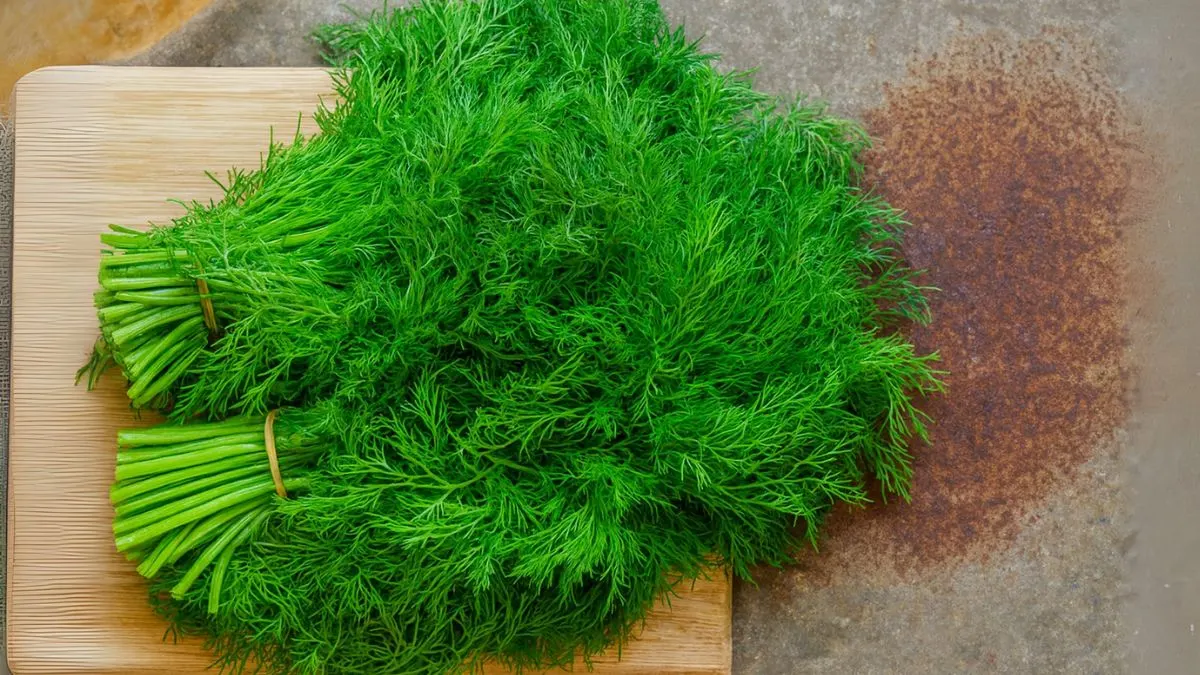Dill, also known as Suwa, is one of the easiest and most rewarding herbs to grow at home. With its feathery green leaves, aromatic seeds, and countless culinary and medicinal uses, dill is loved around the world. It not only enhances the flavor of soups, pickles, and fish dishes but also provides health benefits that make it a must-have in your garden.
Whether you are in India, Canada, or the USA, dill adapts beautifully with the right conditions. In this guide, I’ll share everything you need to know about growing dill—soil requirements, sunlight needs, planting methods, and common challenges—along with lessons I’ve learned from my own gardening experiences.
Why Grow Dill?

- An easy-to-grow herb that requires little maintenance.
- Adds fresh, tangy flavor to global cuisines.
- Used in traditional remedies for digestion and women’s health.
- Dill Seed Powder promotes delayed menstruation, making it valued in herbal medicine.
- Its soft, fern-like foliage also makes it attractive in garden beds and containers.
When I first planted suwa in my kitchen garden, I was amazed at how quickly it sprouted and how resilient it was in cooler months. The flavor of fresh leaves was miles ahead of the dried version from stores.
Choosing the Right Location
Like many herbs, dill thrives in sunshine. It grows well in direct sunlight and prefers cooler weather compared to summer crops. In fact, dill can grow well under full sunlight in winters, which makes it perfect for regions with mild winters like India or temperate climates in Canada and the USA.
If you live in a frost-prone area, choose a spot protected from strong winds. Suwa has delicate stems that can snap easily in harsh conditions.
Also Read: Want Fruitful Apricot Trees? Master These 5 Tips First
Soil Requirements
The success of dill begins with the soil. It prefers:
- Well-drained, loamy soil.
- Moderate organic matter without excessive fertilization.
- Soil pH in the range of 6.0–7.5.
Over-enriched soils lead to tall, floppy plants with weak flavor. In my own trials, I noticed that dill thrived in average garden soil without the need for constant amendments.
Planting Dill
- Method: Dill is best grown by directly sowing the seeds in the garden or containers. Since it has a long taproot, it doesn’t transplant well.
- Timing: Sow seeds in early spring in Canada or the USA, or during cooler winter months in India.
- Depth & Spacing: Sow seeds ¼ inch deep, spaced 12 inches apart. Thin seedlings once they’re a few inches tall.
- Containers: Choose deep pots to allow root growth, and place them in sunny locations.
Watering Guidelines
Balance is key when watering Suwa.
- Water young seedlings regularly to establish roots.
- Mature plants need moderate watering; avoid overwatering to prevent root rot.
- During summers, early morning watering reduces evaporation.
From my experience, letting the soil dry slightly between waterings helped produce healthier, more flavorful leaves.
Also Read: Seaweed for Soil? The Garden Fertilizer You’re Probably Ignoring
Pruning and Maintenance
Pruning dill isn’t as demanding as other herbs, but harvesting correctly helps prolong growth.
- Cut outer leaves regularly to encourage new growth.
- Avoid cutting more than one-third of the plant at a time.
- If you want dill seeds, allow some plants to flower and set seed.
Once dill flowers, leaves tend to lose flavor, so it’s best to stagger sowing every 3–4 weeks for a continuous supply.
Key Requirements for Growing Dill
Requirement |
Details |
Sunlight |
Grows well in direct sunlight; dill can grow well under full sunlight in winters |
Soil |
Well-drained, loamy soil with moderate organic matter |
Planting |
Dill is best grown by directly sowing the seeds in the garden or containers |
Watering |
Regular for seedlings; moderate for mature plants |
pH Range |
6.0–7.5 |
Climate |
Cool weather; sow in spring (USA/Canada) or winter (India) |
Harvest |
Begin cutting leaves after 6–8 weeks; collect seeds when umbels dry |
Common Challenges
Even though dill is hardy, gardeners face a few hurdles:
- Bolting: In hot summers, dill flowers too early, reducing leaf yield. Sow at intervals to avoid gaps.
- Wind Damage: Delicate stems may bend or break in strong winds. Provide support if necessary.
- Pests: Aphids and caterpillars may attack, but neem oil spray usually helps.
- Root Problems: Overwatering or poor drainage can cause root rot.
Also Read: How to Grow Sweet Cantaloupes in Your Backyard
Personal Experience
When I first tried growing suwa in containers, I made the mistake of over-fertilizing. The plants grew tall but lacked the signature aroma. Later, when I shifted to average garden soil and placed the pots where they grew well in direct sunlight, the results improved dramatically. The plants flourished during the mild winter season, proving that dill can grow well under full sunlight in winters.
The fresh harvest not only enhanced my soups and pickles but also reminded me how resilient dill is when given the right environment.
With its quick growth, versatility, and global appeal, dill deserves a place in every garden.






